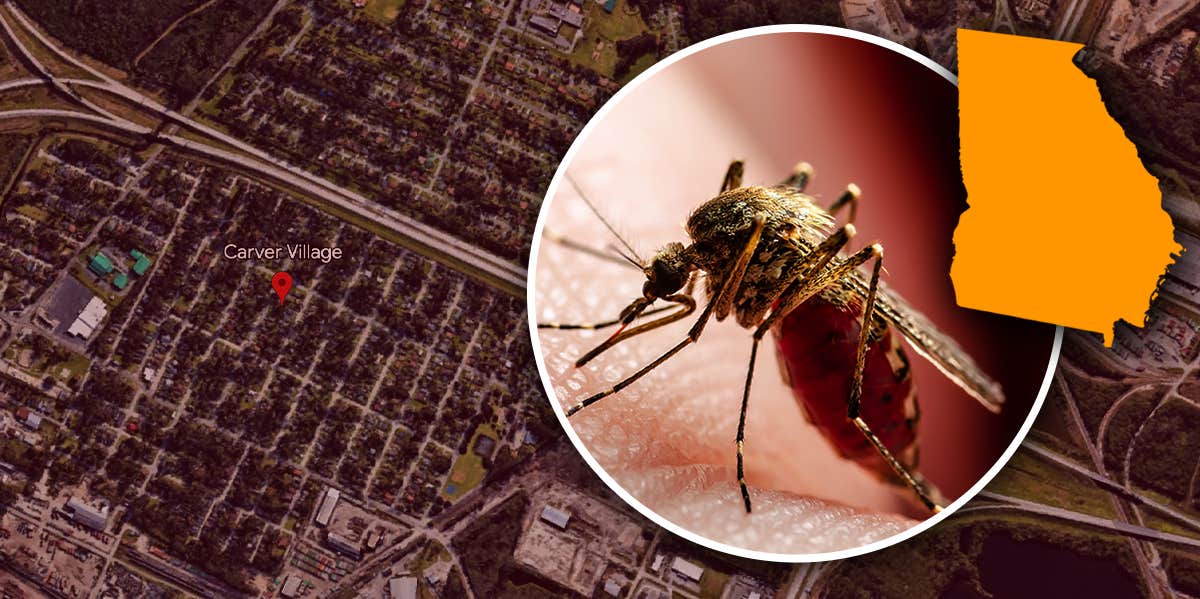How The U.S. Government Used Mosquitos To Secretly Experiment On Its Citizens
No wonder people don't trust the government.
 nechaevkon / Shutterstock, Google Earth, Wikimedia Commons
nechaevkon / Shutterstock, Google Earth, Wikimedia Commons Distrust for the United States government goes back as long as it has existed. Just 20% of American citizens say they trust the government to do the right thing most of the time.
The lack of trust falls into many areas, such as handling taxpayer money, responding to the needs of the people, and keeping our country safe.
But one controversial reason people tend to give the government the side eye is their ugly history of experimenting on human beings, whether it's stealing corpses of children, performing mind control experiments, attempting to use cats as spies, or biological warfare.
One TikToker shared just a few of the experiments the government has carried out in the last few decades.
But one of those lesser-known experiments was a U.S. military entomological warfare field test called Operation Big Buzz.
What was Operation Big Buzz?
Operation Big Buzz was an experiment that took place in June 1955 in Savannah, Georgia and again in Avon Park, Florida in 1956 under the name Operation Drop Kick.
The tests from Operation Big Buzz involved dropping over 300,000 mosquitos from airplanes and on the ground to determine whether or not they could disperse yellow fever mosquitos, known as aedes aegypti, as a method of biological warfare.
Another goal was to find out if the mosquitos could survive the dispersion process and look for blood meals on the ground.
In all, the experiment bred one million female mosquitos for testing, spreading 330,000 uninfected mosquitos into the population from aircrafts and via E14 bombs to be set free on the ground.
The remaining infected mosquitos were used to make sure yellow fever could be produced in them, determine the feasibility of storing them and loading them into weapons.
What were the effects of Operation Big Buzz?
The tested release of the mosquitos found that they could travel as far as 2,000 feet from the area they were deployed in.
Once the mosquitos entered the populated areas, they began actively seeking meals of blood from humans and guinea pigs.
Within a day, many of the mosquitoes had entered the homes of residents and bitten them, proving they could be spread in various ways.
Though it has not been confirmed, many believe that the mosquitoes may have been infected and that the Army sent in fake health workers to document the spread of the yellow fever.
In particular, Black citizens are skeptical based on the government’s long history of using their communities as testing grounds for disease and infection.
But this isn’t the only instance of the U.S. government experimenting on its citizens.
Operation Big Buzz is just one of the many experiments to have been conducted on citizens by the U.S. government.
The Tuskegee Experiment went on for 40 years. The government pretended to treat 400 Black men for syphilis while documenting the long-term effects of the disease.
Many of the subjects died of the disease itself or complications related to it. They also had wives and babies that became infected, resulting in a deeply ingrained distrust of the government in the African-American community.
Operation Big Itch was another heartless test inflicted on citizens. In that case, the government dropped fleas on the residents of Dugway Proving Ground in 1954 to see if they could be used in biological warfare.
Another government experiment called Operation Magic Sword tested how effective insect vectors were in releasing pathogens when released at sea instead of on land.
The test, like the others, revealed that mosquitoes could survive journeys across the ocean.
NyRee Ausler is a writer from Seattle, Washington, and author of seven books. She covers lifestyle and entertainment and news, as well as navigating the workplace and social issues.

